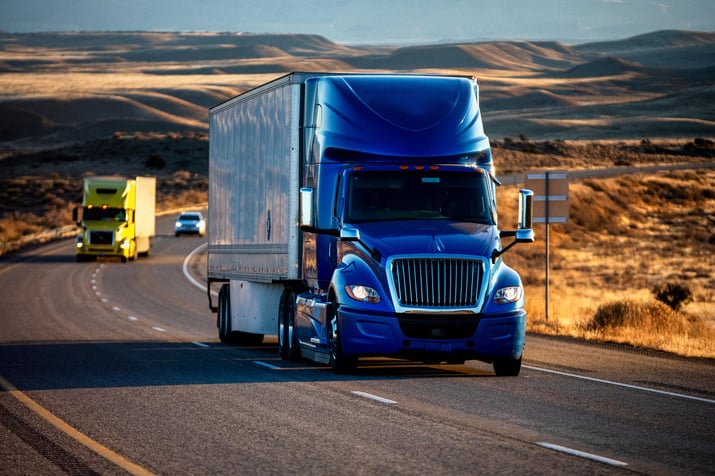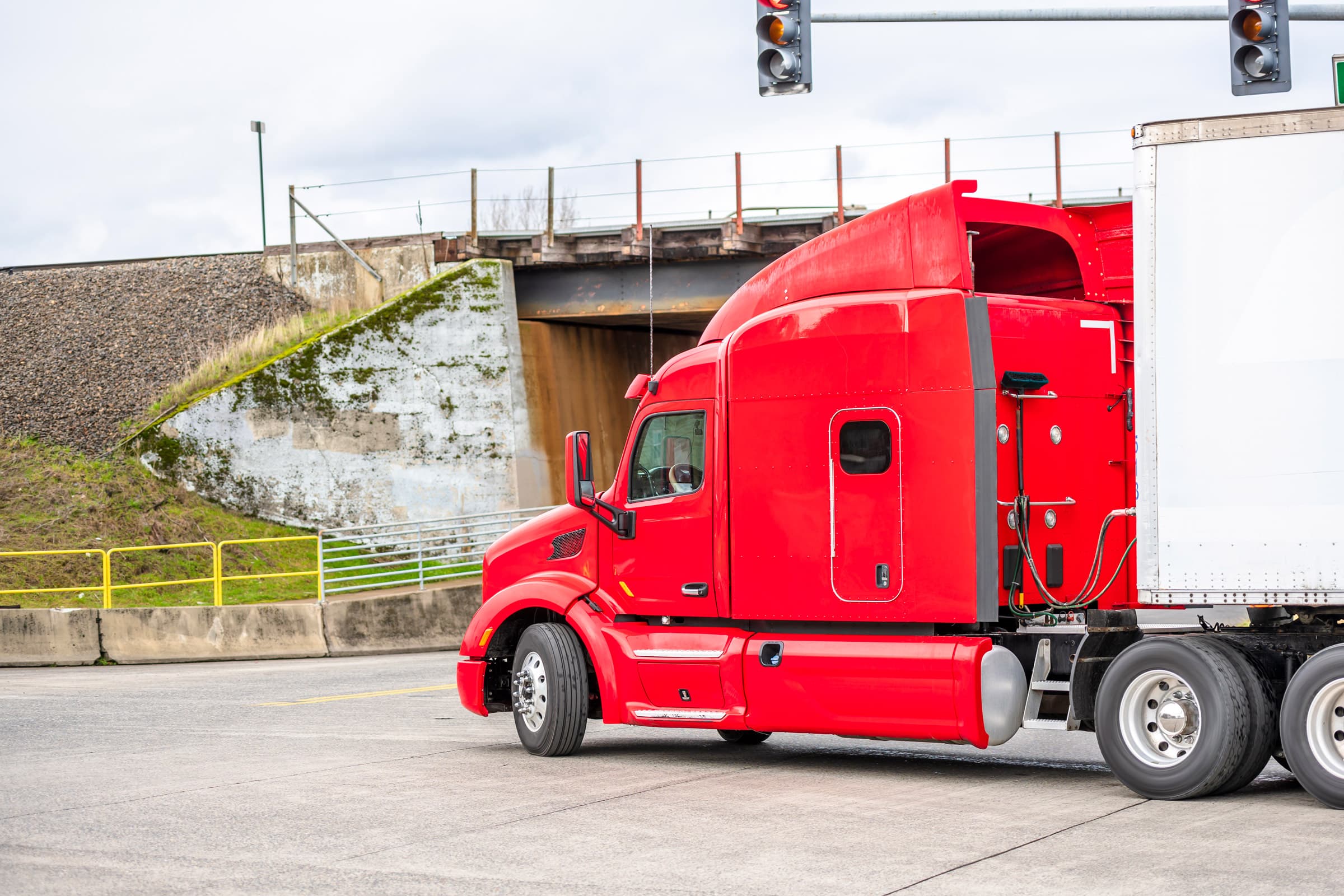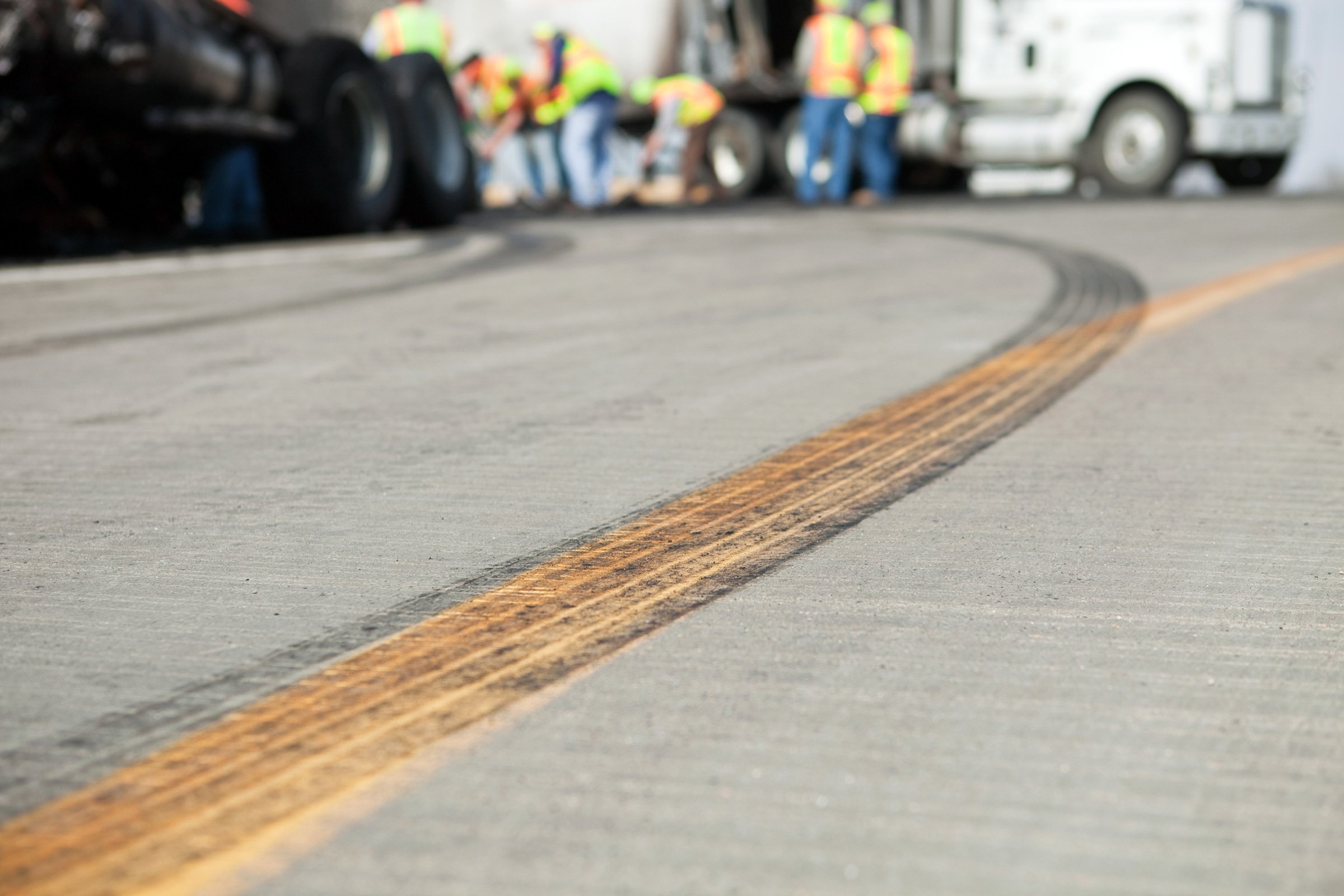Preventing Lane Change Crashes

Lane change crashes may be prevented if drivers recognize the hazards that increase the likelihood of a lane change crash and take defensive measures to avoid a loss.
Read the information below and ask yourself if there are actions you can take to improve your driving skills and reduce the risk of a lane change crash.
RECOGNIZE THE HAZARDS

ENVIRONMENT
Increased traffic on the road makes changing lanes more challenging. Construction zones where lanes are closed and force traffic to merge increase the risk of a lane-change crash. Additionally, obstacles in the road such as parked vehicles blocking your lane, may require an unexpected lane change.

equipment
Tractor-trailers have large blind spots in front, behind, and to the sides of the vehicle. Damaged, missing, or inoperable equipment such as mirrors, turn signals, etc., reduce the driver’s visibility. Additionally, mirrors become misaligned due to vibration while driving and need adjustment.

Personal behaviors
Drivers making frequent lane changes increase the risk of a crash. Speeding and improper following distance reduce a driver’s perception and reaction times. This can lead to abrupt lane changes to avoid a rear-end crash. Poor planning and failing to use a turn signal also increase the risk of a crash.
KNOW THE DEFENSE

CONDUCT A PRE-TRIP INSPECTION
Conduct a thorough pre-trip inspection. Clean mirrors, windows, lights, and reflectors at each stop or as needed. Take the time to properly align the mirrors before each trip.

PLAN AHEAD
Program the route into your GPS before leaving. Be mindful of construction, lane closures, etc.

MAKE SAFE AND LEGAL LANE CHANGES
-
-
-
Avoid distractions while driving, such as talking/texting on phone, eating, drinking, etc.
-
Stay in one lane as much as possible.
-
Maintain proper following distance and be mindful of traffic slowing ahead.
-
Make frequent, quick glances to mirrors and windows to monitor the blind spots around the truck.
-
Be aware of state “Move Over” laws and whether a lane change is required to accommodate emergency vehicles on the side of roads.
-
Use the turn signal well in advance to warn other drivers of your intent to change lanes.
-
Use the Lean and Look method to ensure another vehicle is not in the tractor’s right-front blind spot.
-
Do not make abrupt lane changes. Move gradually into the adjacent lane.
-
Move into the exit or turn lane well in advance. If you miss your exit or turn, continue on and go to the next exit or turn and circle back.
-
-
Note: These lists are not intended to be all-inclusive.
The information in this article is provided as a courtesy of Great West Casualty Company and is part of the Value-Driven® Company program. Value-Driven Company was created to help educate and inform insureds so they can make better decisions, build a culture that values safety, and manage risk more effectively. To see what additional resources Great West Casualty Company can provide for its insureds, please contact your safety representative, or click below to find an agent.
© Great West Casualty Company 2020. The material in this publication is the property of Great West Casualty Company unless otherwise noted and may not be reproduced without its written consent by any person other than a current insured of Great West Casualty Company for business purposes. Insured should attribute use as follows: “© Great West Casualty Company 2020. Used with permission by Great West Casualty Company.”
This material is intended to be a broad overview of the subject matter and is provided for informational purposes only. Great West Casualty Company does not provide legal advice to its insureds, nor does it advise insureds on employment-related issues. Therefore, the subject matter is not intended to serve as legal or employment advice for any issue(s) that may arise in the operations of its insureds. Legal advice should always be sought from the insured’s legal counsel. Great West Casualty Company shall have neither liability nor responsibility to any person or entity with respect to any loss, action, or inaction alleged to be caused directly or indirectly as a result of the information contained herein.




